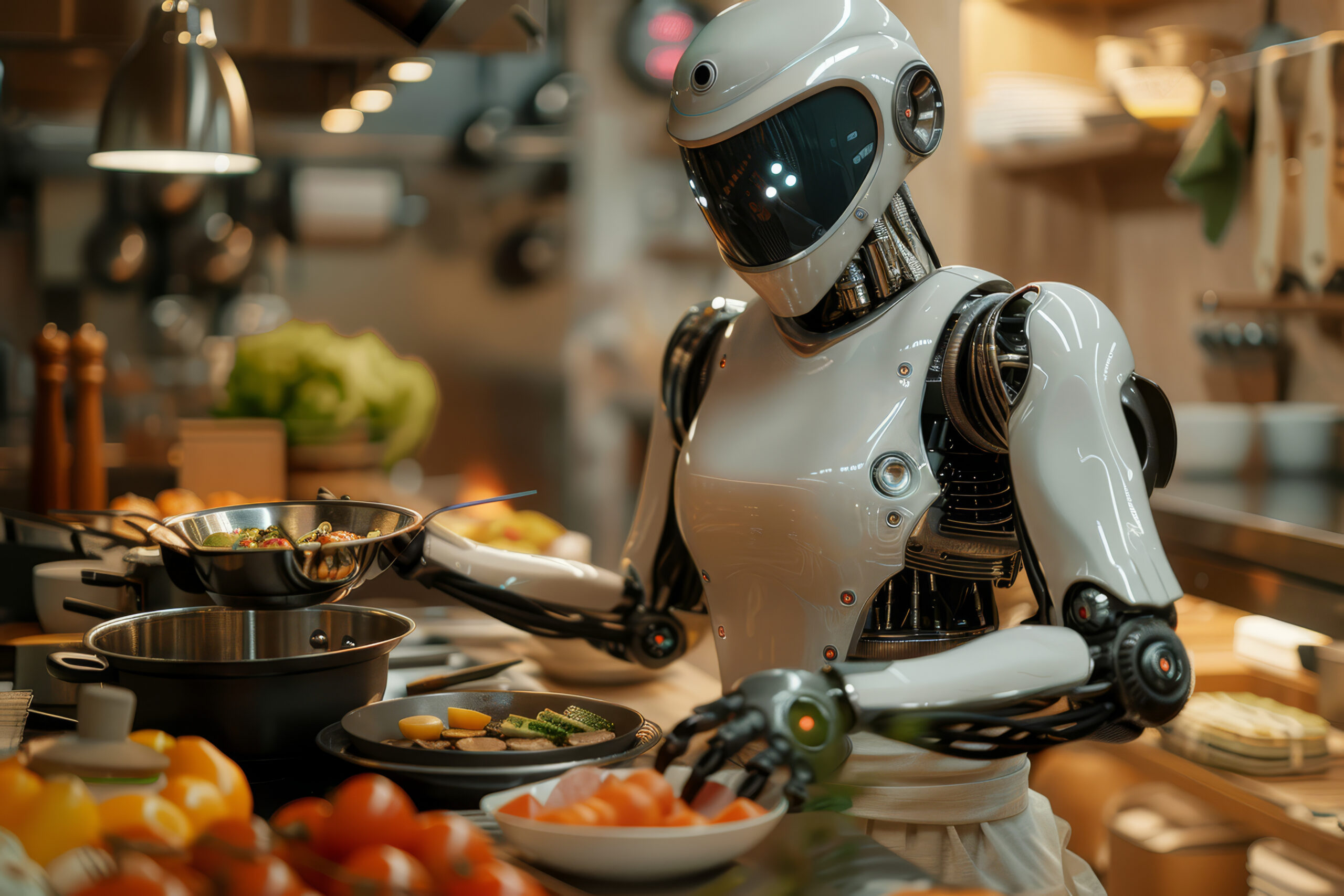From the flickering flames of ancient hearths to the digital sundials of modern ovens, the evolution of the kitchen has always been a tale of mastery and innovation. Today, we stand on the precipice of the next gastronomic revolution, which has less to do with human hands and more with ironclad automation – the rise of the robot chef.
For the restaurant industry, this is more than just a taste of the future; it’s a recipe for seismic change. However, as with any disruptive technology, the immediate question isn’t if this will happen but how and to what extent it will transform the most fundamental aspects of dining out.
In this in-depth look at the emergence of robot-assisted kitchens, we’ll explore the nuanced impacts on restaurant operations, the sensational flavors these robotic sous chefs can achieve, and the broader implications for the future of food service.
Automation in the Kitchen: More than Just a Gimmick?
For now, the sight of a robot hand slicing delicately through a fillet of fish or a mechanical arm confidently tossing a perfectly seasoned salad is an oddity to behold. But these kitchen oddities are quickly becoming the new normal, at least in the conversation about culinary innovation.
The Preparation Phenomenon
Preparation is one of the most time-consuming aspects of restaurant kitchen labor, from chopping to cooking. Automation promises not only to lend a precision and consistency that human hands sometimes lack but also to perform these duties faster than even the most practiced line cooks.
Setting the Table with Technology
Robots are not confined to the kitchen but can also take on waiter roles. Automated systems for taking orders and delivering meals can result in faster, more efficient service that doesn’t tire or make human errors.
Balancing Quality and Quantity
The central narrative of the robot chef story is the promise of excellent, consistent quality—but how does this compare to the intrinsic appeal of a hand-crafted dish?
Consistency without Compromise
In a world where a single chef’s sickness or a new hire’s inexperience can affect an entire restaurant’s quality, the reliability of robots cannot be overstated. This consistency is a pillar upon which reputations can be built and maintained.
The Artistry of the Automated
For the discerning diner, there is something timelessly appealing about a dish created by human hands. Yet, the sophisticated programming and culinary science behind robot-made meals yield some of the most impressive and inventive dishes the industry has seen.
Redefining Labor in Food Service
With robot chefs on the rise, what does this say to the millions of kitchen staff worldwide? The potential for job displacement is a significant concern that cannot be ignored.
Efficiency’s Cost
While increased efficiency often translates to lower consumer costs, the toll on the workforce is still the subject of heated debate. However, transitioning to more complex, service-focused roles could be an opportunity rather than a loss.
The Human Element
Toothsome though they may be, robot-crafted dishes may only partially satisfy the palate of a public drawn to the tales and skills of human chefs. Nostalgia and tradition still have a place at the table.
A Flavorful Forecast
The advent of robot chefs is less a threat than a vector for change, the contours of which the industry is just beginning to discern.
The Vanguard of Change
For some, restaurant automation is a path paved with promise, one that could render finer dining more accessible to a broader market. For others, it forebodes a downgrading of the rich cultural and artistic exchange that is eating out.
Innovating the Intangible
Integrating robots in restaurants is not merely a logistical shift but a reimagining the cultural experience built around food. The challenge now is not in the technology’s capabilities but in preserving the warmth and intimacy of a shared meal in the cold glow of automated service.
Strategic Seasoning for Success
Restaurateurs are left with the question: How can they best prepare for a future where robots and humans share not just the kitchen but the very craft of cooking?
A Blend of the Best
The most compelling approaches seem to involve a harmonious blend of these two culinary worlds—leveraging technology to enhance the dining experience while preserving and promoting the human touch that gives food its soul.
Sustainability and Scalability
Robots can embody the ideals of sustainability, reducing food waste and energy consumption without the stress and potential for error that comes from a human hand. This, combined with scalability, could redefine the industry’s economic model.
Conclusion
The pulsing, aromatic heart of the food world is poised to beat to a new rhythm, one set by the gears and processors of machines. This transition is not to be taken lightly, for it promises not just the mechanization of cooking but the redefining of what it means to dine.
While the robot’s share of the table continues to grow, it’s essential to remember that at the end of the day, for all our gadgets and gizmos, food is and always will be a profoundly human experience. It is an art that can be refined, but never replaced, and the robots we build must serve to enhance, not extinguish, the flame that drives us to create and to savor.
In the tremendous culinary tale of our time, the pen may be held by engineers and programmers. Still, the ink is the vibrant spirit of the food itself, the artistry and tradition that we must work to preserve in this age of mechanical marvels. The table is set for change—how will you partake in the feast?

